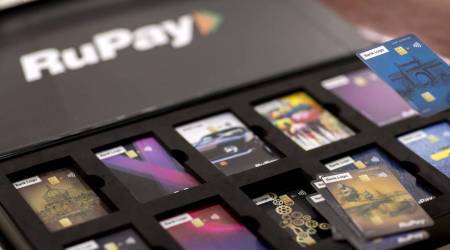With the European Union’s move to standardise a “single charging solution” for all electronics sold in the 27-nation bloc, Apple will most likely have to redesign its iPhones with a USB-C port and replace the current lightning connector. However, accessory makers and experts don’t think it is going to be a big deal for Apple.
“If Apple switches the iPhone to USB-C, it won’t be that big of a change,” Midhula Devabhaktuni, Co-founder & CMO, Mivi, tells indianexpress.com. “When they [Apple] moved to the Lightning port, it was a whole new change and people had to adapt to it.” Devabhaktuni, whose Hyderabad-based startup designs and sells audio products as well as charging accessories for iPhones, says USB-C offers faster charging and transfer speeds than competing standards, and finding the cables is easier due to the fact every major Android phone uses a USB-C charging port.
Apple switched to its proprietary Lightning connector in 2012 with the iPhone 5, two years before the USB-C standard was finalised. At the time of introduction, Lightning offered several advantages over Apple’s old 30-pin dock connector, including the support for two orientations, similar to USB-C. The Lightning connector was slimmer, more durable, and had several features seen in USB-C. It is said that Apple has been one of the tech companies that originally worked on the USB-C standard.
Seeing the delay in progress, Apple opted to go with its own proprietary connector. If Apple had planned to abandon its Lightning chargers for USB-C, it could have done that when it launched the iPhone X in 2017 but it didn’t do so. However, Macs and iPads already use USB-C over Lightning.
USB-C does have advantages over Lightning and it may seem like the winner. This is the impression EU lawmakers have for USB-C, which is a universal cable for all smartphones that will help cut down and reduce electronic waste. Apple, meanwhile, argues that switching from Lightning to USB-C will produce more e-waste since all iPhones (iPhone 5 and later) are using Lightning and that number is over 1 billion. This may be true – after all, Apple sells millions of iPhones each year, and it’s going to be a PR nightmare for the company if it stops supporting a Lightning port all of the sudden.
There is an argument that Cupertino has already switched to USB-C in the iPad Pro and Air lineups, with the base iPad model being the exception. So why can’t Apple follow the same pattern and add a USB-C port to the higher-end iPhone models? It may look good on paper but in practical terms, Apple wouldn’t want to take any drastic step that puts its multi-billion-dollar iPhone business under threat.
“Inherently, in USB-C right now, there is a fair amount of confusion over different variants of USB-C,” said Andrew Cornwall, Senior Analyst for mobile technologies at Forrester Research. “Sometimes a particular USB-C cable works and sometimes it doesn’t work, depending upon the actual use case. It’s not quite as universal as many believe it to be.”
“We see a lot of confusion between people buying a micro-USB cable, versus a Type-C cable, or a Type-C versus a micro-USB but with a Lightning cable, it’s very rare to see any kind of confusion,” Devabhaktuni cite similar reasons why more people return cables online due to confusion between what is compatible and what is not compatible with their phones.
Insiders say the reason why Apple is not adding a USB-C port on its iPhones is the fear that users might charge the device with other non-regulated chargers which might result in faster depletion of battery for Apple products. Or it might result in overheating of devices and lead to faster decay.
The point people often miss is that Apple has an established but controlled accessories network for the iPhone. Under the MFi certification programme, which stands for Made for iPhone/iPod and iPad, makers of accessories for those devices must go through to have their hardware approved by Apple. It’s a stringent process, but once it is MFi-certified, the product is safe to use. Switching to USB-C for the iPhone means Apple has to take a hit on a profitable Lightning accessories business, plus it could create confusion in the minds of consumers over USB-C and Lightning.
“There is no possible threat to anyone but surely people will now have an option to buy a lower cost USB-C charger from other brands as Apple accessories tend to be on the higher price band,” says Aksh Chauhan, COO, Cashify. According to Chauhan, Apple devices have been one of the highest traded inventory on the Cashify Platform and it adds a lot of value to their ecosystem.
Although the new rules will take effect by the fall of 2024, Apple is in a catch-22 situation. A case in point is a long product development process at Cupertino. Companies like Apple work on multiple generations of a product under strict deadlines, so it is hard to incorporate drastic design changes at a later stage of product development. If Apple is willing to add a USB-C port to the iPhone, it needs to take one direction and design the next iPhone making it future-ready. But on the other hand, Apple can take a different route and get rid of the cable mess completely with a port-less iPhone.
However, wireless adoption is rather slow due to the high cost of chargers and technical challenges. But Apple has a real chance to make a big difference and bring more people to switch to an iPhone that is completely wireless. Wireless charging is already supported on all iPhone models.







